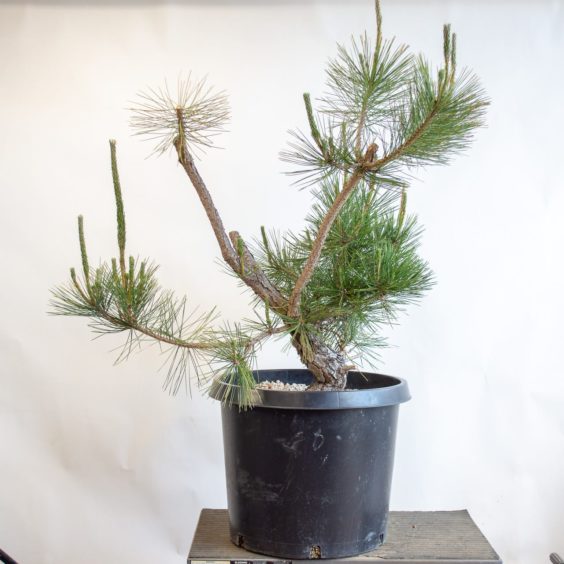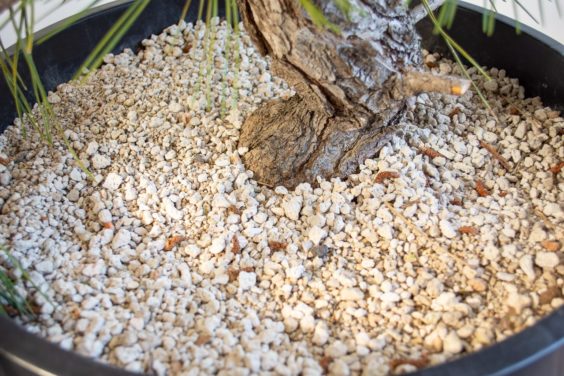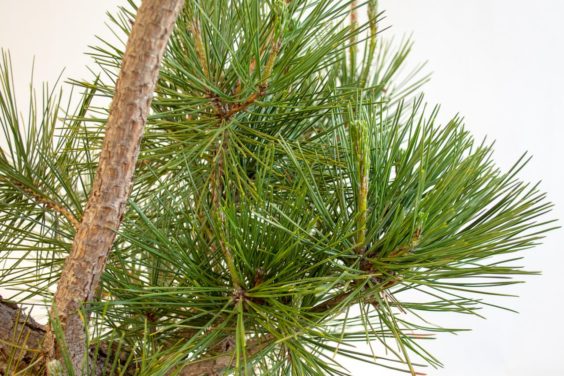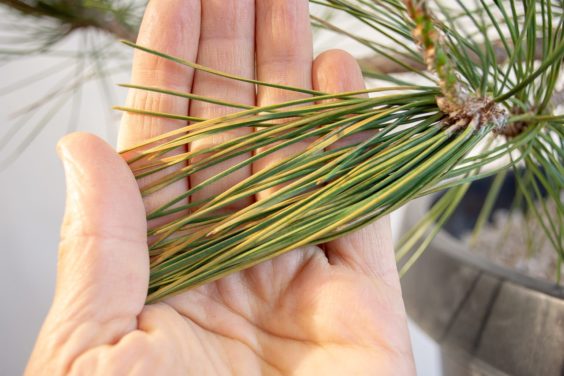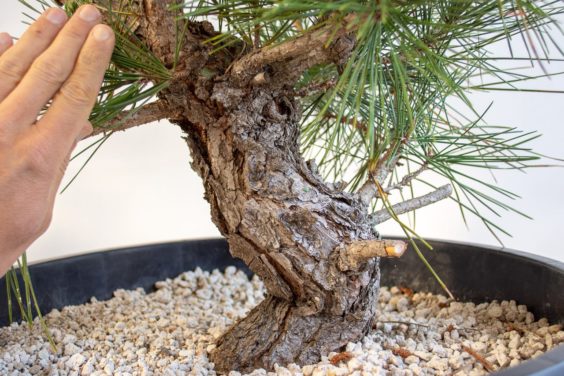The first few years of growing pines from scratch can be a lot of fun. From sprouting the seeds, to making seedling cuttings, to setting the first curves of the trunk, the early years of pine development include some fun steps.
The opposite is true when working with field-grown material.
Field-grown Japanese black pine
The first step is to generate as many roots as possible. Not exactly “fun” in the traditional sense, but important as this step underlies all subsequent steps.
It can be a big transition from the field to a container. Field grown trees are often planted in pure pumice to avoid keeping the soil too moist.
Pine planted in pumice
While the tree is producing new roots, I tend to water the soil infrequently but provide overhead water to the foliage at least once or twice a day.
I take a similar approach with fertilizer, sprinkling the foliage with fish emulsion but holding off on dry fertilizer until the needles have fully developed – a good sign that new roots are growing.
In the meantime, I watch the foliage carefully to gauge the tree’s progress. I do this by checking for insects and removing brown needles when they appear so I can monitor the rate at which old needles die off.
The foliage on this pine looks pretty good. Apart from some sunburned needles, my main concern is that the new needles are developing slowly – not surprising considering that we’ve been having a cool spring.
Healthy foliage
Sunburned foliage
Despite the size of the tree and the container, the bonsai will likely reach no more than 11″ fully styled. Here’s a close-up of the lower part of the trunk.
The main section of the trunk
The big question at this point is how many years will pass before it’s time to work on the tree. I plan to repot towards the end of this year if the tree grows well. If, however, the new needles stay short or I see other signs that the tree is progressing slowly, I may wait a second year before repotting to avoid slowing the tree down. The initial branch selection or styling can begin once the tree is healthy and growing vigorously.
The post Caring for recently dug pines appeared first on Bonsai Tonight.

